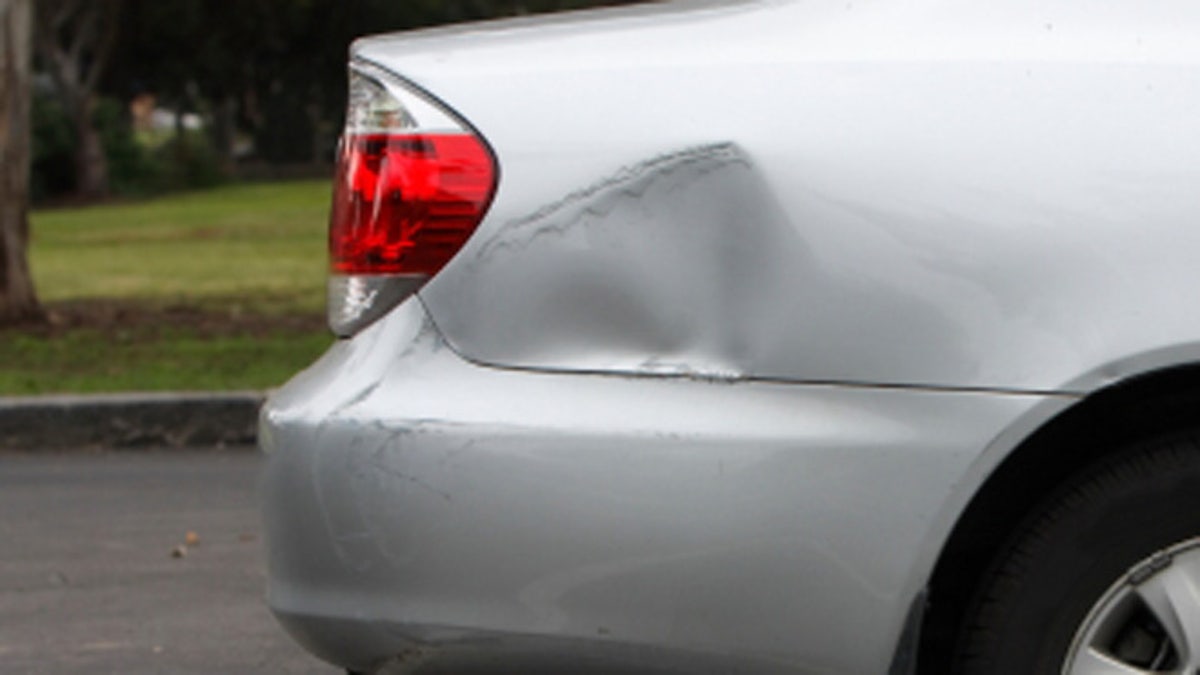
You probably don't want to drive around with an unsightly dent in your passenger-side door. So, what should you do about that baseball or other car door-induced ding in your car? Here are three approaches:
Try to fix it yourself
If the paint isn't affected by the dent, you can try the do-it-yourself route. You will need some tools, including a few different sizes of body hammers. You will also need some dollies. Check out what tools you already have at your disposal and see which DIY method works best in your situation.
If you have a little ding, you may be able to fix the problem with a hair dryer and dry ice or a can of condensed air. (You don't want to try this on a dent with any paint damage.)
Heat the dented area with a hair dryer, making sure to hold it five to seven inches away from the panel. Keep the hair dryer moving, and continue for one to three minutes. The area should be warm to touch.
While it is still warm, apply the cold component. Make sure you wear thick gloves when you handle dry ice. Swirl the dry ice around, or spray the compressed air on the dent. The metal should react to the cold and flatten out.
A word of warning. Terry Haltom, education manager for the collision repair and refinish (CRRT) program at Universal Technical Institute (UTI) in Sacramento, Calif., says that he does not recommend using do-it-yourself products because the products use a glue that can cause damage to your paint and won't work out the complex dents.
Settle for a temporary fix
If you don't have the time or the budget to fix a down-to-the-metal problem right away, you can buy time with a temporary fix.
"Remember that bare metal and the environment don't like each other very much," says Matt Cutaia, vice president collision manager at Gates Automotive Center in Rochester, N.Y.
"Left untreated, exposed, raw metal on the body of your car can rust in just a matter of weeks. Add in the oxidizing effects of road salt, and you can cut that time down to days in this portion of the country during the winter months. "
You can use Vaseline to seal out moisture and create a barrier, but Cutaia says that you will have to clean off the Vaseline and reapply frequently for this to work effectively. You can also apply clear nail polish to the scratched area.
"It may not look the most appealing, but you'll have the peace of mind in knowing that rust won't develop quite as quickly," Cutaia says.
Another option involves giving your car a quick paint touch-up. Find out the manufacturer's code for the color of your car so you get it right the first time.
Leave the fixing to the professionals
Haltom lists the following steps that a technician will do to fix a dent:
- The technician will remove the paint from the dent.
- Then, they will work the metal out so the least amount of body filler or putty is needed to finalize the repair.
- They will do some sanding of the filler to make it flat, smooth and match the body contour. At this point, the tech will feather out the paint (sand it), so when primer is applied it will be the correct thickness.
- Typically, adjacent panels will have to be scuffed and painted for a proper color match and blend.
- At this point, it gets detailed.
Both Cutaia and Haltom recommend taking your car to a professional for serious dents and long-term fixes. The average price for dent repair depends on the size of the damaged area and where you go to get it fixed.